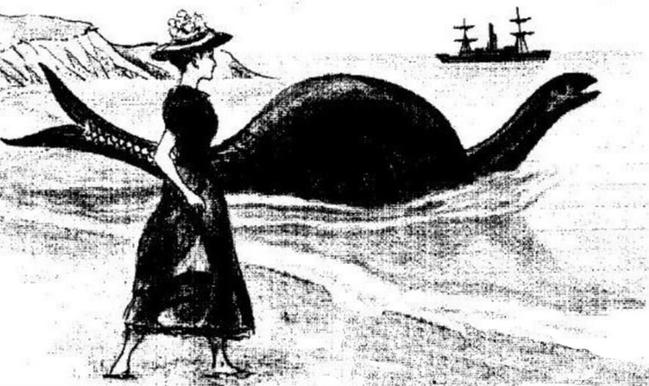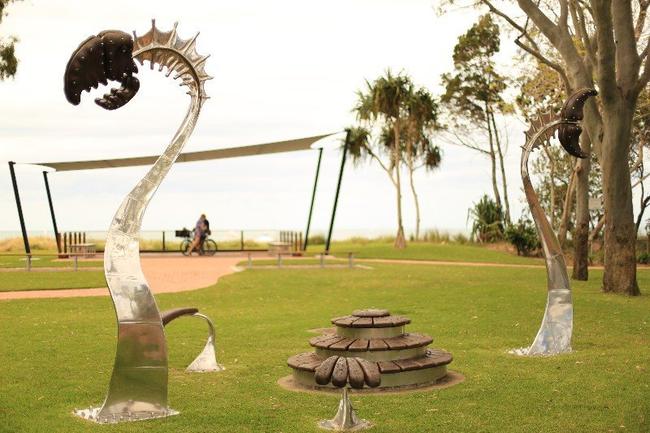EXPLAINED: Fraser Coast's answer to the Loch Ness Monster
Miss Shirley Lovell, a school teacher stationed at Sandy Cape in the late 1800s, spoke of her sighting of a sea serpent of some 34 feet in length

Fraser Coast
Don't miss out on the headlines from Fraser Coast. Followed categories will be added to My News.
ALMOST 250 years ago, the first sighting of a terrifying sea creature was reported in Fraser Coast waters.
On May 20, 1770, Sir Joseph Banks recorded the sighting of an odd creature in his journal when the Endeavour sailed along the coast of what is now known as the Wide Bay and Fraser Island.
In his diary, he spoke of what he saw.
"The sea was so clear that we could distinctly see the bottom and indeed when it was 12 and 14 fathom deep the colour of the sand might be seen from the mast head at a large distance," he wrote
"While we were upon the shoal, innumerable large fish, sharks, dolphins and one large turtle were seen.
"A grampus of the middle of size leap'd with his whole body out of the water several times, making a splash as if a mountain had fallen into it."
His words were the first recorded evidence of a creature that would become known as the Moha Moha - Hervey Bay's answer to the Loch Ness Monster.
Miss Shirley Lovell, a school teacher stationed at Sandy Cape in the late 1800s, wrote of her sighting of a sea serpent of some 34 feet in length.
Her account was reported in the Maryborough Chronicle.
"I was while walking on the Sandy Island beach admiring the stillness of the sea, it being dead calm, when my eye caught sight of the head and neck of a creature I had never seen before," she wrote.

"I went to the edge of the water and saw a huge animal, lying at full length, which was not at all disturbed by my proximity to it, enabling me to observe the glossy skin of the head and neck, smooth and shiny as satin.
"Its great mouth was wide open all the time it was out of the water.
"In about a quarter of an hour or so it put its head and neck slowly into the sea, closing its jaws as it did so."
Miss Lovell described the creature as having a long neck and a wedge-shaped fish-like tail, with the head and neck "moving under a carapace".
"The fish-like part of the tail was as glossy and shiny as the head and neck," she said.
Testimony from Aboriginal people supported her claims, with reports the creature had attacked their camp.
Numerous sightings of the creature have been reported off the coast of the region, even as recently as the 1970s.
A representation of the terrifying creature can be seen at Scarness Park.
Known as the Moha Moha, or dangerous turtle, the sculpture of the creature was created by Tony Bradbury, Blunt Chisel and Chris Calcutt.
It was commissioned by Hervey Bay City Council as part of its Public Art annual budget allocation.


